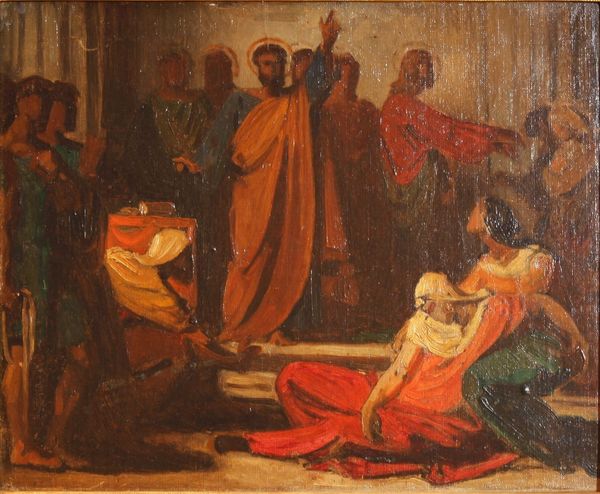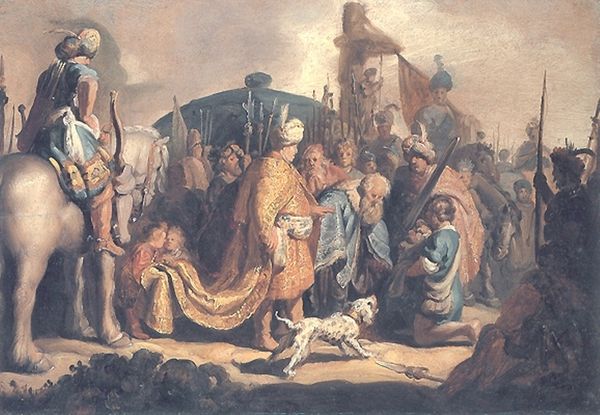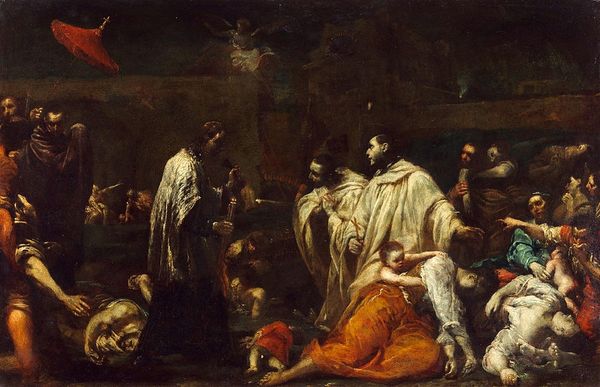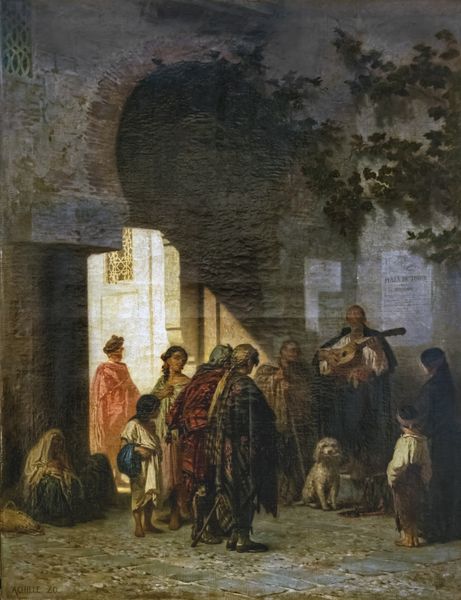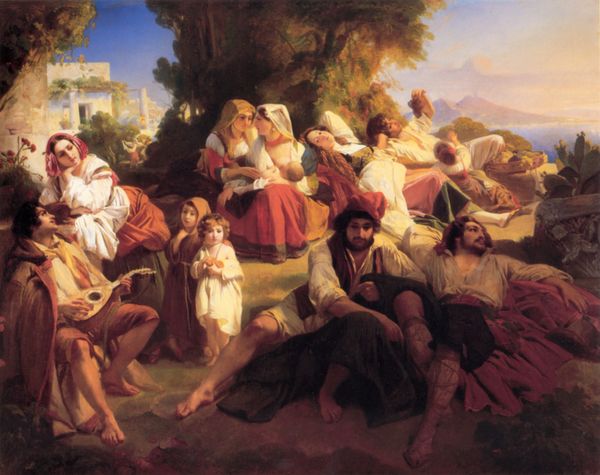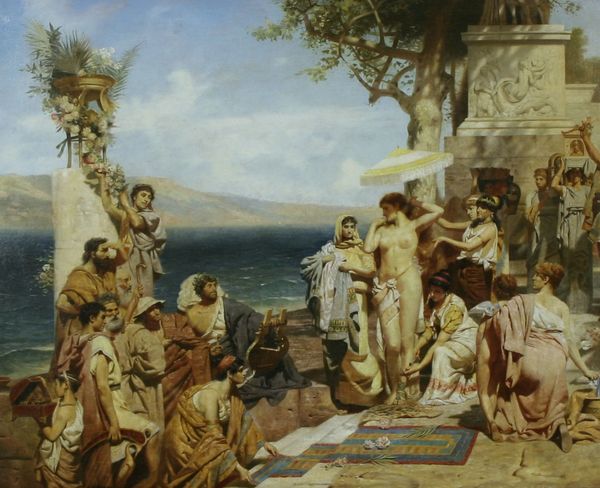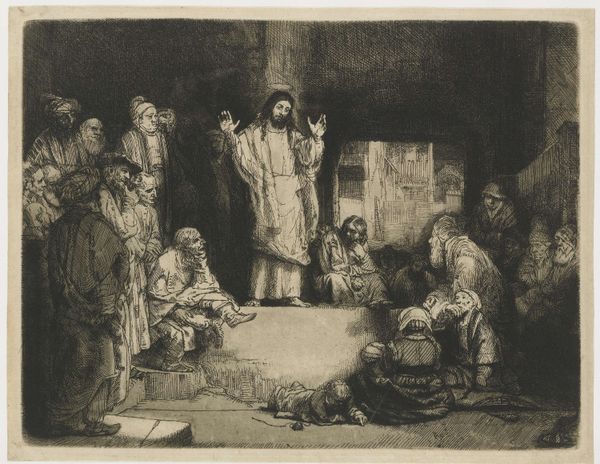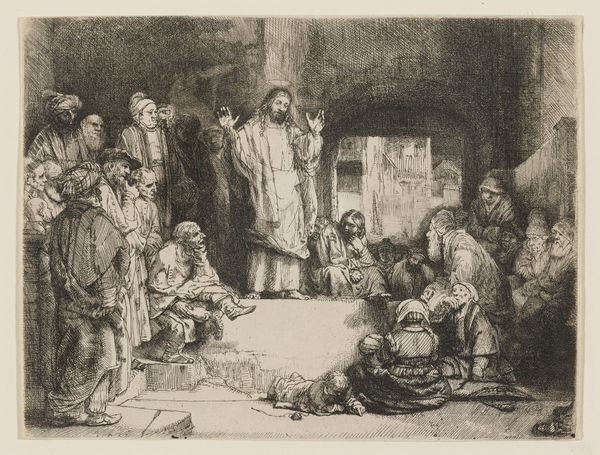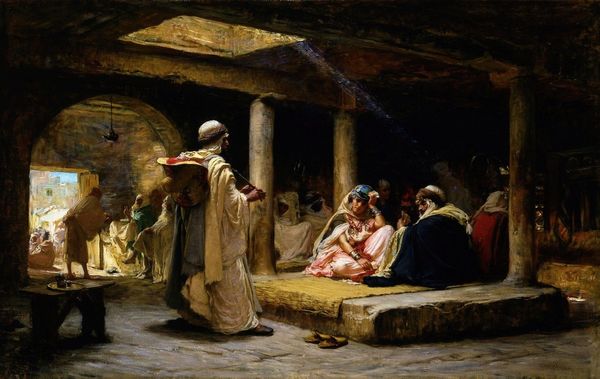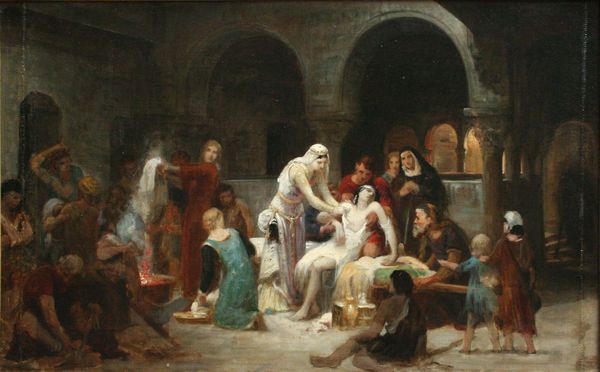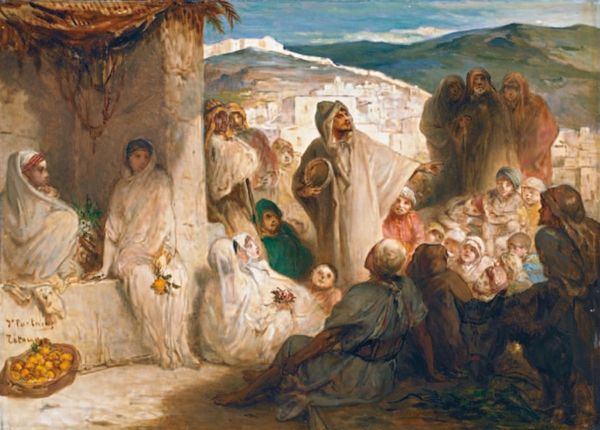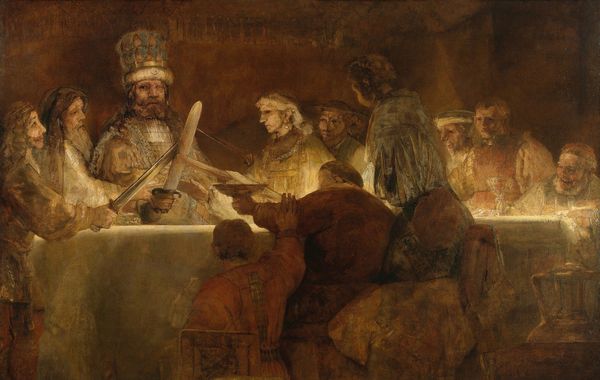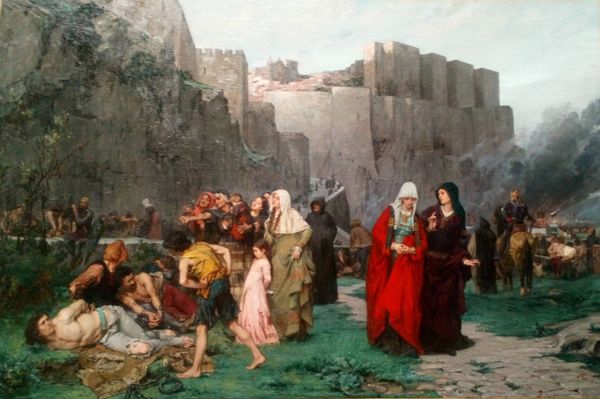
painting, oil-paint
#
portrait
#
gouache
#
painting
#
oil-paint
#
figuration
#
oil painting
#
romanticism
#
orientalism
#
genre-painting
Copyright: Public domain
Editor: This is Alexandre-Gabriel Decamps’s “Guard Corps in Orient,” an oil painting. It seems to depict a scene from daily life, perhaps in the Middle East or North Africa, and it gives off a casual yet somehow also tense feeling. What details strike you as most significant here? Curator: It is a superb example of Orientalism, isn’t it? Decamps uses imagery that pulls from prevailing cultural memories and fantasies of the "Orient" in the 19th century. See how he carefully includes both weaponry and musical instruments? Consider what stories those juxtaposed symbols tell us about Western perceptions of power, leisure, and otherness. Editor: That’s interesting – so the presence of both, like the rifles leaning against the wall and the musician playing, isn't accidental. It's meant to communicate something specific about how Europeans viewed this culture? Curator: Precisely. The Western viewer, steeped in Romantic ideals, sought exoticism but also, often unconsciously, justified colonial ambitions. Think about what the recurring motifs in these types of works—the veiled women in the background, the smoking figures, the abundance of weaponry—come to signify over time. Editor: It's like these symbols created a collective, shared idea. Something like a visual shorthand, embedding cultural attitudes into the work, which would have built upon, or reinforced, preconceived ideas that people already had. Curator: Exactly! How does that reading influence your sense of that initial mood, that tension you observed? Does it shift, knowing the layers of meaning encoded in the image itself? Editor: It does shift – I see the scene now less as a simple, unfiltered view of everyday life and more as a constructed narrative, mediated by Western expectations and biases. Thank you, this has changed how I understand Orientalist art. Curator: It’s always fascinating to trace how an artist and his audience imbue symbolic meaning and create those lasting impressions across cultural boundaries and throughout time.
Comments
No comments
Be the first to comment and join the conversation on the ultimate creative platform.
